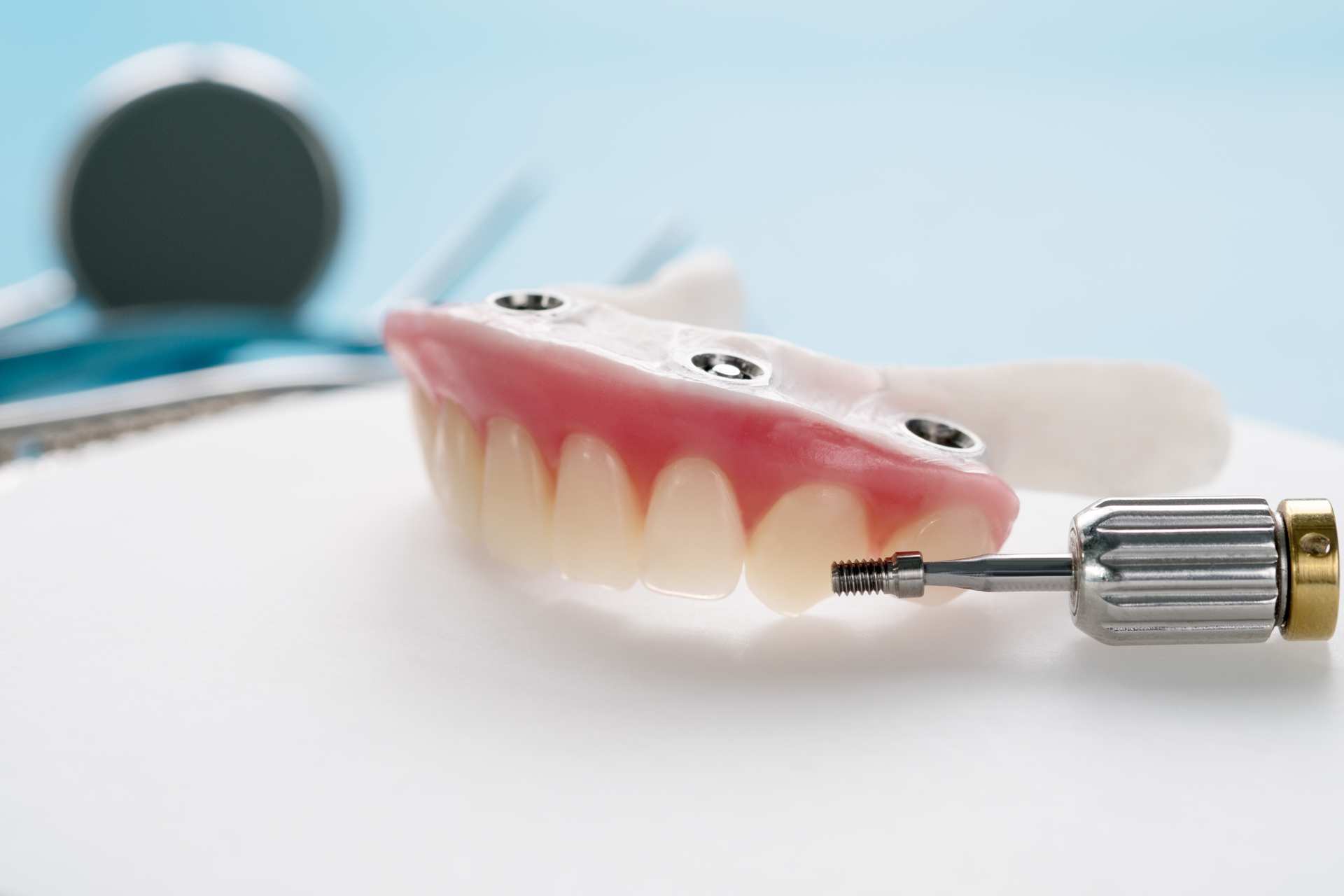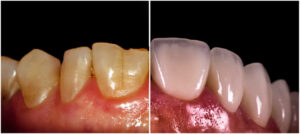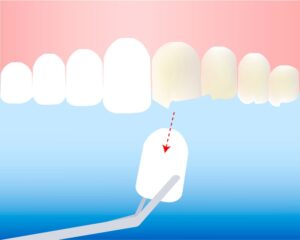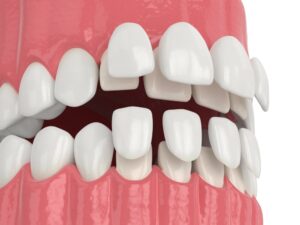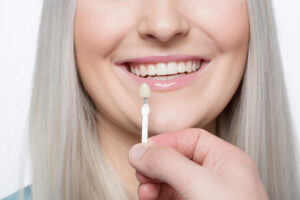Today in our blog we will discuss all the details about the implant overdenture. Undoubtedly, this is one of the most frequent options when there is a loss of natural teeth. The implant overdenture restores the functionality that the mouth loses when there are no teeth. In addition, from an aesthetic point of view, it looks very natural, which is very comforting for patients. The overdenture implant is used to replace the entire dental arch (either upper or lower), in edentulous patients, or to make bridges. Let’s see below the details of the overdenture on implants.
If you are interested in receiving porcelain veneers in Miami, call us at 786 603 7514.
What is an implant overdenture?
Simply defined, an overdenture implant is a type of dental prosthesis that is screwed onto permanent dental implants previously anchored to the buccal bones.
To better understand this, it is necessary to define what the dental implants are, in which the overdenture is attached. Dental implants come to perform the function of the roots of the teeth. It is a metal pin (titanium or chrome) that is embedded within the upper or lower jaw bone, as needed. It is ideal for patients who do not have much bone and who would not support a greater number of dental implants.
So, a more complete definition of what an overdenture implant is as follows: It is a removable prosthesis (since the patient can extract it their self) that has high stability due to the fact that it is supported on previously placed dental implants. It is usually enough to place 2 implants in the lower arch and 4 implants in the upper arch, although more can be placed.
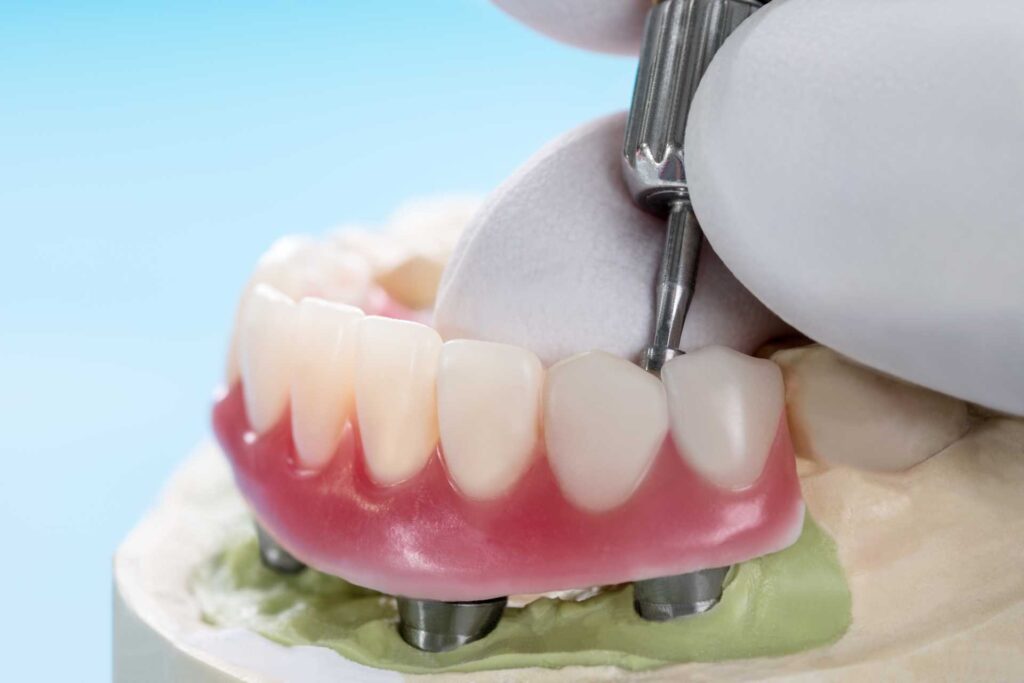
- Patients feel very comfortable, because it does not include a palate.
- It restores the elevation of the lip, the phonetics when speaking, and the masticatory functions.
- It has a very successful aesthetic and looks natural.
- It is usually made of resin and acrylic teeth, with a metal core for strength.
Types of overdenture implants
Implant overdentures are classified according to the type of connection they have with the implants. Its characteristics depend on the conditions of the patient and the cost. Let’s look at each type of overdenture implant:
- Overdenture on implants with attachment : It is the most economical and most used attachment model. It has a fairly simple system of female and male. Its weak point is that it is not very resistant and wears out over time.
- Overdenture on implants with bars : It is the most effective, and is the system preferred by dentists. The implants are interconnected by means of balls and rods that go inside the mouth. The overdenture is placed on these bars.
- Overdenture on implants with locators : These are small ball abutments that protrude from the implants. The overdenture is anchored to these abutments. It is very versatile and adapts to the needs of almost any patient. It has a high level of effectiveness and is easily cleaned.
- Overdenture on telescopic implants : It has a higher price, so its use is not very common. It is highly aesthetic and functional. You can wear zirconium teeth. It has an internal metal structure that gives it greater stability.
- Overdenture on implants with magnets : This system is currently the least used. However, some professionals suggest it for certain types of patients, since their system makes it much easier to remove and put on the overdenture (especially for very old people).

Comparison of the overdenture implant with other dental prostheses
Let us see in the following table some points of comparison between the overdenture on implants, the conventional removable prosthesis, and the fixed hybrid prosthesis.
| COMPARISON BETWEEN 3 TYPES OF DENTAL PROSTHESES (TABLE) | |||
| OVERDENTURE OVER IMPLANTS | REMOVABLE PROSTHESIS | FIXED HYBRID PROSTHESIS | |
| Stability | It is very stable because it is attached to dental implants. | It does not have much stability since it is only attached to the bone. | It is the most stable since it is fixed to dental implants. |
| Cleaning | It is very easy to clean, thanks to the fact that the patient can remove it themself. | It is very easy to clean because the patient can remove it themself. | A lot of skill is required for oral cleaning since the patient cannot remove it themself. Requires visits to the dentist for a cleaning. |
| Sensation | It feels like wearing natural teeth because it does not include a palate. | By including the palate, greatly restricts the chewing sensitivity of the mouth. | It feels as if you are wearing your natural teeth as there is no palate and cannot be removed. |
| Security | It is very safe to use. Being hooked on implants prevents it from falling. | It is less secure because it can fall off when talking or chewing. | It is highly secure. Being fixed in the implants, there is no way for it to move from its place. |
| cost | It has a medium price. It requires a few implants (4 above and 2 below) for its use. | It is the cheapest because it does not require dental implants. | It has a fairly high cost. As it is fixed, it needs more implants to support it. |
| Durability | It is very durable, but care must be taken when removing it from the mouth. If it falls to the ground it can break. | Its life span is shorter because it can be misaligned by the reduction of the bone mucosa. Also, it can fall to the ground and break easily. | It is the most durable. Resin teeth wear down with use, but they last a long time and can be restored. There is no danger of breaking by falling because it is fixed. |
In conclusion, we can say that the overdenture implant has the best of the removable prosthesis and the hybrid prosthesis. The overdenture implant can be removed by the patient for washing or resting. In addition, being supported on implants, it provides as much stability as fixed hybrid prostheses.
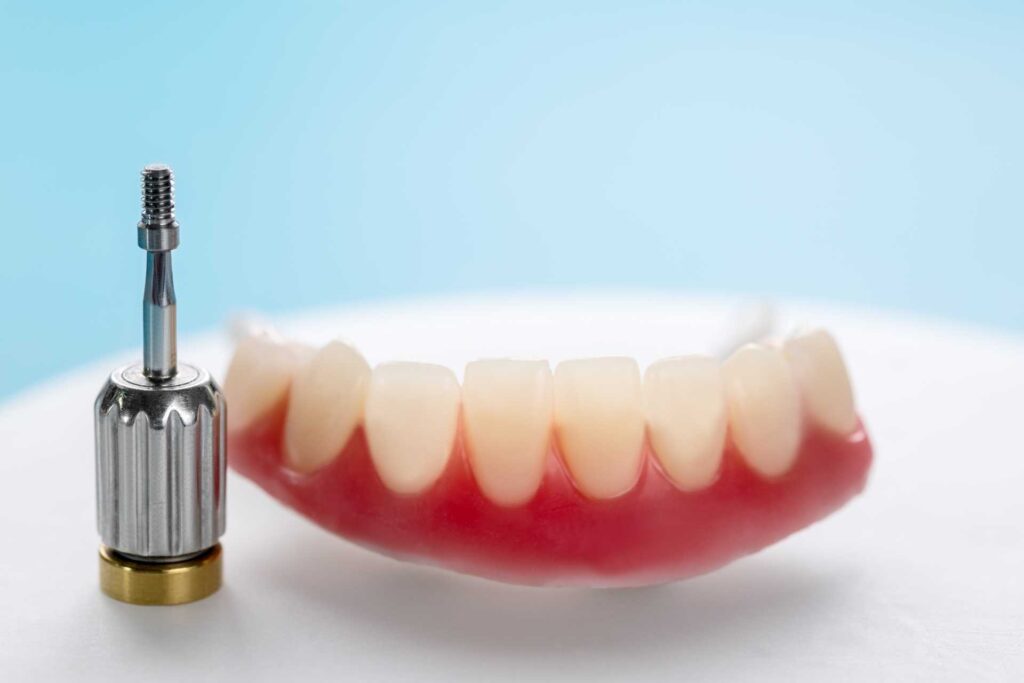
How to clean an overdenture implant
A question frequently asked by users is how to clean an overdenture implant. It is logical to ask this, since as we all know, oral hygiene is very important in all cases, especially if we wear a prosthesis.
The great advantage of the overdenture implants is that the patient can remove themself and this makes cleaning much easier. Next, we will tell you step by step how to clean an overdenture implant:
- The first of all is that you learn to remove your overdenture and fit it again, since you will have to do this movement to wash it yourself after each meal. To remove it you must lift it on both sides at the same time, not on one side. Pull gently without applying much pressure, until it comes out. It is also important to know that you should not apply too much pressure when inserting it, but rather slide it gently until you feel the sound of clicking on the implants. All this will prevent the system that joins the overdenture to the implants from being damaged and the elements of the overdenture from being damaged.
- For oral cleaning when removing the overdenture you must wash the fixed element (that is, the implants) with a medium bristle brush around the attachments or the connection system you have. The movements with the brush must cover all the faces, just as if the implants were our natural teeth. For this you can use special toothpaste for dental implants. In addition, floss should be passed between the closest part of the implant and the gums, and interdental brushes should be used.
- For the cleaning of the overdenture it is important to know that it is always cleaned outside the mouth. You should not use any type of abrasive toothpaste, as this can damage the aesthetics of the acrylic or resin material. The most advisable thing is to use neutral or hand soap. You should also purchase a special brush for cleaning overdentures.
- At least once a week, soak the overdenture in water with a special soluble disinfectant tablet for overdentures. You should never use bleach, baking soda, or hydrogen peroxide, because they are very abrasive substances for resin or acrylic.
